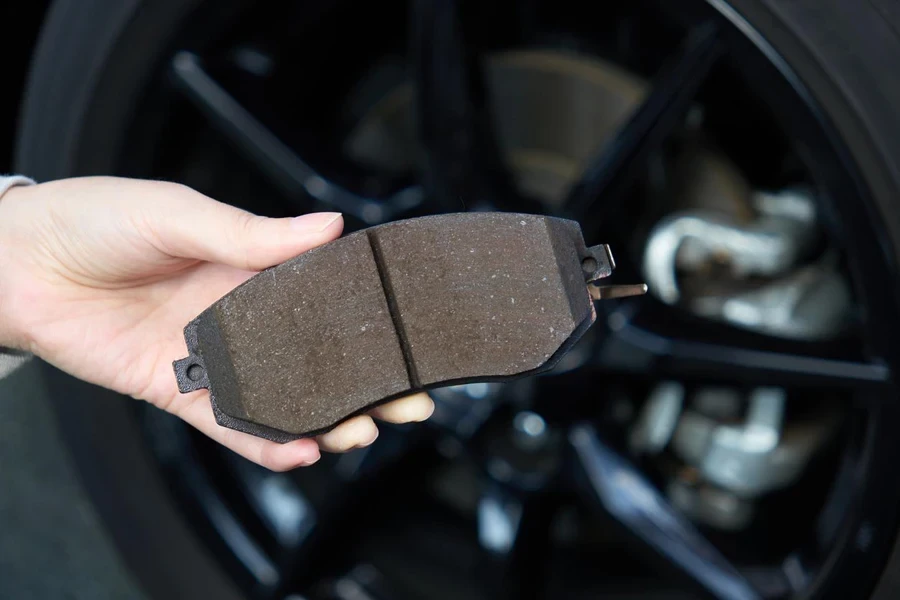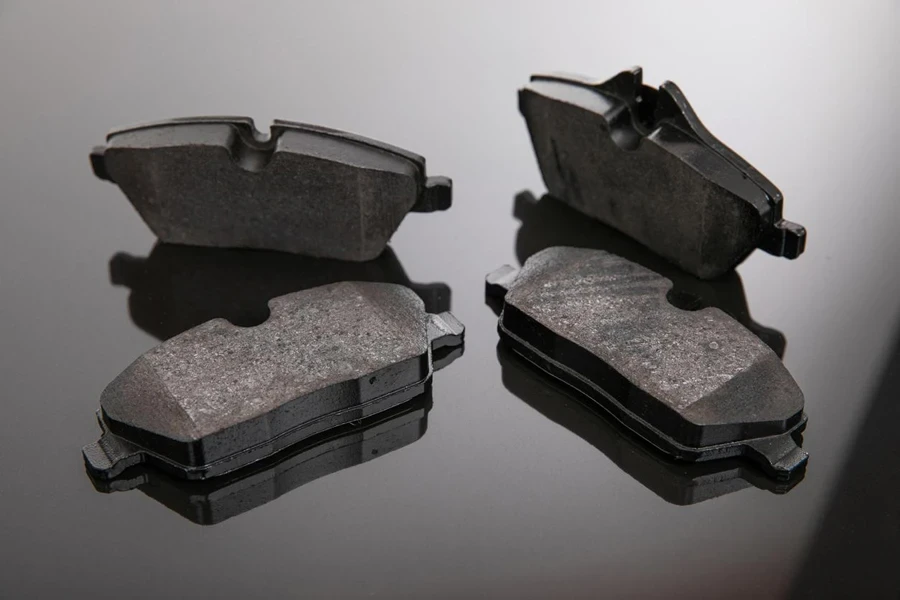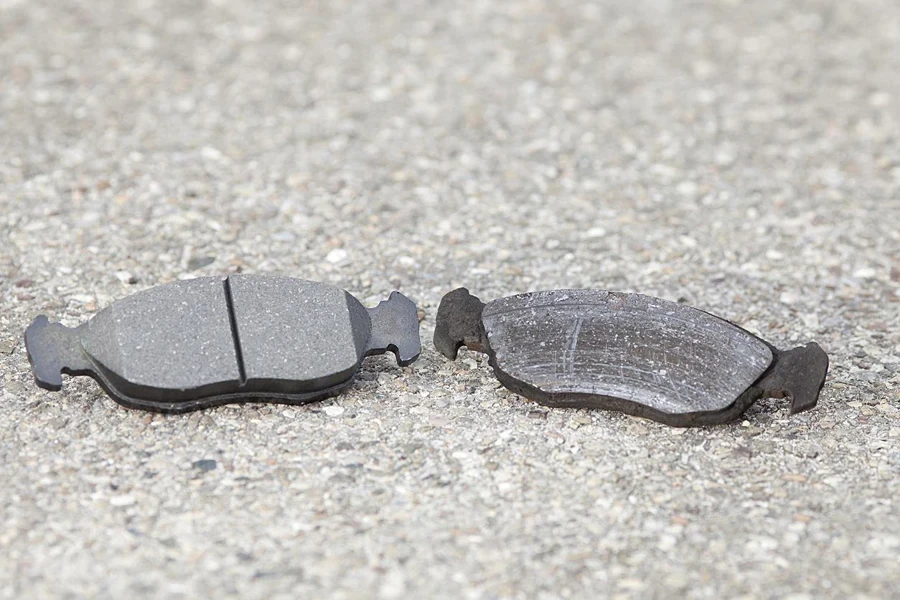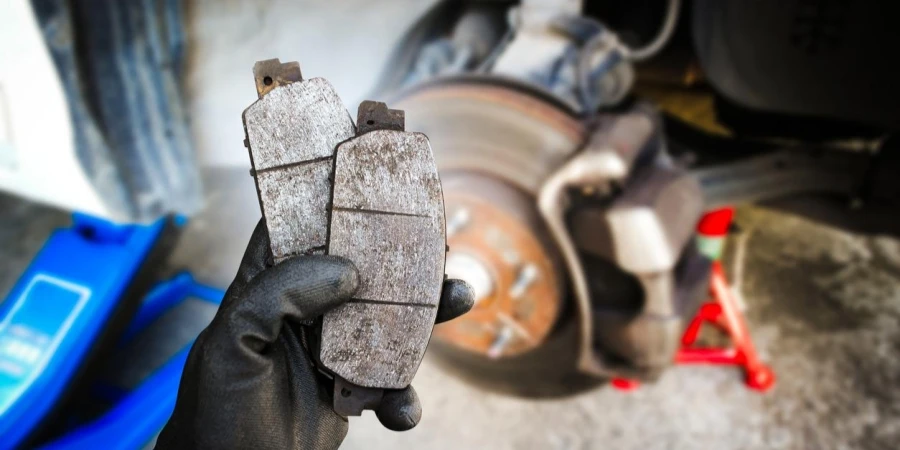Table of Contents
1. Introduction
2. Exploring brake pad varieties and their applications
3. 2024 market insights and trends
4. Essential factors in brake pad selection
5. Top brake pad models and their standout features
6. Conclusion
Introduction
Choosing the right brake pads is essential for ensuring vehicle safety and optimal performance. Brake pads are the key components that provide the necessary friction to stop vehicles, making them crucial for both everyday driving and high-performance situations. High-quality brake pads enhance braking efficiency, reduce noise, and minimize wear on the braking system, leading to better vehicle control and safety. They also offer longer lifespan and reliability, translating to cost savings and fewer maintenance issues. Understanding the various types of brake pads and their specific applications can significantly impact the performance and longevity of a vehicle, making informed choices paramount for maintaining safety standards and operational efficiency.
Exploring brake pad varieties and their applications

Ceramic brake pads
Ceramic brake pads are made from a dense ceramic material, often combined with copper fibers, which contribute to their performance characteristics. One of the primary benefits of ceramic brake pads is their quiet operation; they generate less noise compared to other types of brake pads. This makes them a preferred choice for vehicles where noise reduction is important.
Ceramic pads also produce less dust, which helps keep the wheels cleaner and reduces maintenance needs. They are reliable across a broad range of temperatures and driving conditions, maintaining consistent performance without significant heat fade. This makes them ideal for regular driving conditions, where consistent stopping power and longevity are desired. Additionally, ceramic brake pads tend to wear more evenly, contributing to a longer lifespan for both the pads and the rotors.
Metallic brake pads
Metallic brake pads, also known as semi-metallic pads, contain a mix of metals like steel, iron, and copper, bonded with friction modifiers and fillers. These pads are highly durable and provide excellent braking performance, especially under high-stress conditions. They are known for their superior heat dissipation, which helps in maintaining performance during heavy braking or high-speed driving.
However, metallic brake pads can be noisier and produce more dust than ceramic pads. They are often used in performance and heavy-duty vehicles due to their durability and ability to handle high temperatures. Despite the increased noise and dust, the robustness of metallic pads makes them a strong choice for applications requiring high braking performance and longevity.
Organic brake pads
Organic brake pads, also referred to as non-asbestos organic (NAO) pads, are made from a mixture of fibers such as rubber, glass, and Kevlar, bound together with resin. These pads are generally quieter and softer than metallic pads, offering a smooth braking experience. They produce less dust compared to semi-metallic pads, although more than ceramic ones.
One downside of organic brake pads is their faster wear rate, which means they may need to be replaced more frequently. They also perform less effectively under high temperatures, which can lead to brake fade in demanding conditions. Despite these drawbacks, organic pads are often used in smaller vehicles and light-duty applications where high performance is not as critical.
Carbon-ceramic brake pads
Carbon-ceramic brake pads are designed for high-performance applications, combining carbon fibers with ceramic materials. These pads are exceptionally durable and capable of withstanding extreme temperatures without significant performance degradation. They offer excellent stopping power and are commonly used in high-end sports cars and racing vehicles.
The primary advantage of carbon-ceramic pads is their ability to provide consistent braking performance under extreme conditions, such as high-speed driving or track use. They also produce less dust and are more resistant to wear, contributing to a longer lifespan. However, they are significantly more expensive than other types of brake pads, which can be a consideration for many buyers.
2024 market insights and trends

Market trends
Experts currently value the brake pad market at US$ 12 billion, and they expect it to reach US$ 16 billion by 2028. They estimate this boost will happen at a 5.5% compound annual growth rate (CAGR) from 2023 to 2028.
Consumer preferences
Consumer preferences in the brake pad market are shifting towards products that offer a balance of performance, durability, and environmental friendliness. There is a growing demand for ceramic brake pads due to their quiet operation and minimal dust production. These pads are favored by drivers who prioritize comfort and low maintenance.
For performance enthusiasts and those driving in demanding conditions, metallic and carbon-ceramic brake pads are preferred. These pads provide exceptional stopping power and heat resistance, making them ideal for high-speed driving and heavy braking scenarios. Additionally, there is an increasing interest in organic brake pads as consumers become more environmentally conscious and seek products with reduced ecological impact.
Consumers are also looking for brake pads that offer easy installation and compatibility with a wide range of vehicles. Brands that provide comprehensive product information, including compatibility guides and installation instructions, are gaining a competitive edge. Furthermore, customer reviews and ratings play a crucial role in influencing purchasing decisions, with buyers seeking reliable feedback on performance and longevity.
Essential factors in brake pad selection

Vehicle compatibility
Matching brake pads to specific vehicles is crucial for ensuring optimal performance and safety. Each vehicle has unique specifications and requirements, meaning that not all brake pads will be suitable for every model. For instance, a compact car requires different stopping power compared to a heavy-duty truck. Using incompatible brake pads can lead to reduced braking efficiency, increased wear on the braking system, and potential safety risks. Manufacturers typically provide detailed compatibility information, making it easier to select the appropriate brake pads for each vehicle.
Driving conditions
The driving environment significantly influences brake pad selection. Different driving conditions require brake pads with specific characteristics to ensure safety and efficiency. For urban driving, which involves frequent stops and starts, organic brake pads are often preferred due to their quiet operation and smooth braking. These pads are made from a mixture of fibers and resin, providing a softer feel that is ideal for city environments.
Performance requirements
Evaluating performance requirements involves considering factors such as stopping power, noise reduction, and durability. Stopping power is critical for safety, especially in high-speed or emergency situations. Brake pads must provide sufficient friction to bring the vehicle to a stop effectively. Semi-metallic brake pads are known for their high stopping power, making them suitable for performance-oriented and heavy-duty vehicles.
Cost and value
Balancing initial costs with long-term value and maintenance needs is crucial when selecting brake pads. While ceramic brake pads tend to be more expensive upfront, their durability and low maintenance requirements can make them a more economical choice in the long run. These pads produce less dust and noise, reducing the need for frequent cleaning and replacements.
Top brake pad models and their standout features

Bosch QuietCast Premium Ceramic Brake Pads
Bosch QuietCast Premium Ceramic Brake Pads are renowned for their quiet operation and durability. They are designed with advanced ceramic materials and an aerospace alloy, ensuring high-quality performance and long-lasting use. One of the key specifications includes the integration of a protective transfer layer that extends pad and rotor life. The multi-layer shim provides exceptional noise dampening, which is a standout feature for users prioritizing a quieter ride. These pads also produce less dust, making them a top choice for those seeking to maintain clean wheels with minimal maintenance.
Power Stop Z17 Evolution Plus Ceramic Brake Pads
Power Stop Z17 Evolution Plus Ceramic Brake Pads are celebrated for their performance and reliability. These pads are engineered with a low-dust formula, which keeps wheels cleaner for longer periods. The pads feature a thermal scorched surface for a fast break-in, ensuring optimal performance from the first use. The chamfered and slotted design of the pads reduces noise and vibration, enhancing driving comfort and safety.
Bendix Premium Copper-Free Ceramic Brake Pads
Bendix Premium Copper-Free Ceramic Brake Pads are designed with a focus on environmental sustainability and high performance. These pads eliminate the use of copper, reducing their environmental impact while still providing excellent braking power. The proprietary friction material ensures consistent performance and long pad life. Additionally, Bendix pads are known for their superior noise reduction and low dust production. These pads are ideal for drivers who prioritize environmentally friendly products without compromising on quality.
Brembo Ceramic Brake Pads
Brembo Ceramic Brake Pads are synonymous with high performance and reliability. These pads are engineered to deliver superior stopping power and consistent performance across various driving conditions. Brembo pads feature a multi-layer shim for noise reduction and a high-tech friction material that ensures optimal performance and durability. The low-dust formulation helps in keeping wheels clean, reducing maintenance efforts.
EBC Redstuff Ceramic Low Dust Brake Pads
EBC Redstuff Ceramic Low Dust Brake Pads are designed for performance vehicles and drivers who demand high braking efficiency. These pads are made from a high-friction compound that ensures superior stopping power, especially at higher speeds. The low-dust formulation is a key feature, keeping wheels cleaner and reducing the need for frequent maintenance. EBC Redstuff pads are ideal for performance sedans, trucks, and SUVs. They offer reduced rotor wear and are known for their quiet operation. The pads provide excellent braking performance without the high levels of dust typically associated with high-friction pads. This makes them a top choice for drivers who want both performance and cleanliness.

Conclusion
Selecting the best brake pads in 2025 requires a thorough understanding of vehicle compatibility, driving conditions, performance requirements, and cost-value balance. With advancements in brake pad technology and a variety of options available, such as Bosch QuietCast, Power Stop Z17, Bendix Premium, Brembo Ceramic, and EBC Redstuff, businesses can ensure optimal safety and performance for their fleets. Prioritizing factors like noise reduction, dust production, and durability will help in making informed choices that enhance both vehicle longevity and driving comfort. Ultimately, choosing the right brake pads is essential for maintaining high safety standards and operational efficiency.




